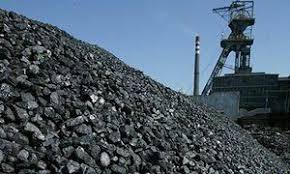Gilsonite IN Oil&Gas
Gilsonite is used in drilling mud fluids and oil well cementing.
Gilsonite, "Natural asphalt, Natural Bitumen" in a range of softening points and particle sizes, is a standard ingredient in oil-based drilling muds used in shales and other difficult geological formations. The addition of specially-treated Gilsonite to water-based drilling fluids helps minimize hole washout by stabilizing troublesome shales, and seals off highly permeable sands while reducing torque and drag.
The addition of Gilsonite to oil well cements reduces slurry weight without loss of compressive strength and acts as an effective bridging and plugging agent to seal fractures in weak formations while cementing. also Gilsonite,"Natural asphalt, Natural Bitumen" use in Mud drilling according to FLC " Filtrate Loss Control " or " Fluid Loss Control " in oil base mud.
FLC " FLUID LOSS CONTROL "
HT
Grade CH-109GP API
Principal Applications
HT HP Filtrate Loss Control
FLC Fluid Loss Control
Shale Control
| Typical Properties | |
| Softening Point (ASTM E28-92) | 185-220°C 356-428°F |
| Ash (ASTM D271-70M) | <=10.0% |
| Moisture (AGC Method) | <=1.5% |
| Penetration (25°C, 100 gm, 5 sec.) | 0-2 |
| Specific Gravity | 1.04-1.06 |
| Color in Mass | Black |
| Flash Point (COC) | 320ºC; 600ºF |
| Sulfur | 0.30% |
FLC " FLUID LOSS CONTROL "
HV HM HT
Grade CH-109GR API
Principal Applications
Ultra HT-HP Filtrate Loss Control
FLC Fluid Loss Control
Shale Control
HIGH TEMPERATURE , HIGHT MELTING POINT , LOW VISCOSITY
| Typical Properties | |
| Softening Point (ASTM E28-92) | 250-270°C 482-518°F |
| Ash (ASTM D271-70M) | <=10.0% |
| Moisture (AGC Method) | <=1.5% |
| Penetration (25°C, 100 gm, 5 sec.) | 0-2 |
| Specific Gravity | 1.04-1.06 |
| Color in Mass | Black |
| Flash Point (COC) | 320ºC; 600ºF |
| Sulfur | 0.30% |
FLC " FLUID LOSS CONTROL "
LV HM HT
Grade CH-109GW API
Principal Applications
Ultra HT-HP Filtrate Loss Control
FLC Fluid Loss Control
Shale Control
HIGH TEMPERATURE , HIGHT MELTING POINT , LOW VISCOSITY
| Typical Properties | |
| Softening Point (ASTM E28-92) | 220-250°C 430-482°F |
| Ash (ASTM D271-70M) | <=10.0% |
| Moisture (AGC Method) | <=1.5% |
| Penetration (25°C, 100 gm, 5 sec.) | 0-2 |
| Specific Gravity | 1.04-1.06 |
| Color in Mass | Black |
| Flash Point (COC) | 320ºC; 600ºF |
| Typical Particle Sizing (ASTM E11-70) | |
| % Retained (Cumulative) | |
| Pulverized | |
| + 10 mesh | -- |
| + 35 mesh | 0 |
| + 65 mesh | <=1 |
| + 100 mesh | <=5 |
| + 200 mesh | <=20 |
FLC and Gilsonites are according to API and OCMA grades of 200Mesh that they are changable according to customer requirements
FLC Fluid loss Control Filtrate loss Control
Gilsonite HT Grade is soluble in aromatic solvents (Benzene, Toluene, Xylene) and in most chlorinated solvents.
Packaging Gilsonite:
Gilsonite HT Grade is available in 50 lb. and 25 kilo net multi-ply paper bags, which may be palletized and stretch wrapped. It is also available in a variety of bulk bag sizes.
Health & Safety:
Gilsonite, "Natural asphalt, Natural Bitumen" is a naturally occurring hydrocarbon. There is no known history of dermatitis, lung disease or other health problems associated with handling of Gilsonite resin as supplied. Dusts are subject to combustion. Normal precautions used with flammable materials apply.


